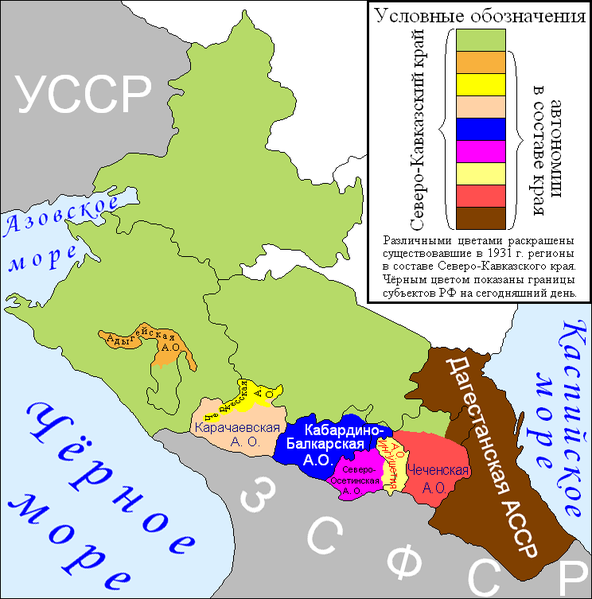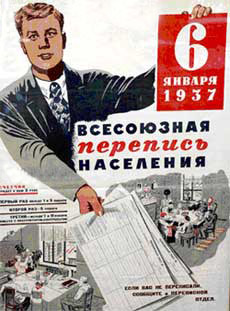|
North Caucasus Krai
North Caucasus Krai (russian: Се́веро-Кавка́зский край, ''Severo-Kavkazskiy kray'') was an administrative division (''krai'') within the Russian Soviet Federative Socialist Republic of the Soviet Union. It was established on 17 October 1924. Its administrative center was Rostov-on-Don until 10 January 1934, Pyatigorsk until January 1936, then Ordzhonikidze (today Vladikavkaz) and, from 15 December 1936, Voroshilovsk (today Stavropol). As of 1932, the population of the krai was estimated at 10,290,000 in an area of 351,800 km2. 45.9% of the overall population was Russian, and 37.2% of the overall population was Ukrainian. Widespread death by starvation occurred in the krai during the Soviet famine of 1932–33. As of the 1937 All-Union Census, the krai had a population of 1,635,277 in a smaller area. After undergoing numerous administrative changes, including the loss of the majority of its territory to the new Azov-Black Sea Krai on 10 January 1934, i ... [...More Info...] [...Related Items...] OR: [Wikipedia] [Google] [Baidu] |
North Caucasus Krai
North Caucasus Krai (russian: Се́веро-Кавка́зский край, ''Severo-Kavkazskiy kray'') was an administrative division (''krai'') within the Russian Soviet Federative Socialist Republic of the Soviet Union. It was established on 17 October 1924. Its administrative center was Rostov-on-Don until 10 January 1934, Pyatigorsk until January 1936, then Ordzhonikidze (today Vladikavkaz) and, from 15 December 1936, Voroshilovsk (today Stavropol). As of 1932, the population of the krai was estimated at 10,290,000 in an area of 351,800 km2. 45.9% of the overall population was Russian, and 37.2% of the overall population was Ukrainian. Widespread death by starvation occurred in the krai during the Soviet famine of 1932–33. As of the 1937 All-Union Census, the krai had a population of 1,635,277 in a smaller area. After undergoing numerous administrative changes, including the loss of the majority of its territory to the new Azov-Black Sea Krai on 10 January 1934, i ... [...More Info...] [...Related Items...] OR: [Wikipedia] [Google] [Baidu] |
Soviet Famine Of 1932–33
The Soviet Union,. officially the Union of Soviet Socialist Republics. (USSR),. was a transcontinental country that spanned much of Eurasia from 1922 to 1991. A flagship communist state, it was nominally a federal union of fifteen national republics; in practice, both its government and its economy were highly centralized until its final years. It was a one-party state governed by the Communist Party of the Soviet Union, with the city of Moscow serving as its capital as well as that of its largest and most populous republic: the Russian SFSR. Other major cities included Leningrad (Russian SFSR), Kiev (Ukrainian SSR), Minsk (Byelorussian SSR), Tashkent (Uzbek SSR), Alma-Ata (Kazakh SSR), and Novosibirsk (Russian SFSR). It was the largest country in the world, covering over and spanning eleven time zones. The country's roots lay in the October Revolution of 1917, when the Bolsheviks, under the leadership of Vladimir Lenin, overthrew the Russian Provisional Government tha ... [...More Info...] [...Related Items...] OR: [Wikipedia] [Google] [Baidu] |
Southern Federal District
The Southern Federal District ( rus, Ю́жный федера́льный о́круг, Yuzhny federalny okrug, ˈjuʐnɨj fʲɪdʲɪˈralʲnɨj ˈokrʊk) is one of the federal districts of Russia, eight federal districts of Russia. Its territory lies mostly on the Pontic–Caspian steppe of southern Russia. The Southern Federal District shares borders with Ukraine, the Azov Sea, and the Black Sea in the west, and Kazakhstan and the Caspian Sea in the east. The Southern Federal District was originally called the North Caucasian Federal District when it was founded in May 2000, but was renamed for political reasons on 21 June 2000. On 19 January 2010, the Southern Federal District was split in two, with its former southern territories forming a new North Caucasian Federal District. On 28 July 2016 Crimean Federal District (which contains the Republic of Crimea and the Federal city of Sevastopol) was abolished and merged into Southern Federal District in order to "improve the gove ... [...More Info...] [...Related Items...] OR: [Wikipedia] [Google] [Baidu] |
North Caucasian Federal District
North Caucasian Federal District (russian: Се́веро-Кавка́зский федера́льный о́круг, ''Severo-Kavkazsky federalny okrug'') is one of the eight federal districts of Russia. It is located in extreme southern Russia, in the geographical area of the North Caucasus. The federal district was split from Southern Federal District on 19 January 2010. The population of the federal subjects comprising the federal district was 9,428,826 according to the 2010 Census, living in an area of . The current Envoy is Yury Chaika. Demographics Ethnic Russians constitute less than one-third of the total population at 2,854,040 (30.26%) according to the 2010 Census, but constitute a majority of 80% in Stavropol Krai and are at least 20% of the population in North Ossetia, Kabardino-Balkaria, and Karachay-Cherkessia. A diverse assortment of mostly Muslim Chechen speaking ethnic and tribal groups form the remainder. The North Caucasus Federal District is Russia's ... [...More Info...] [...Related Items...] OR: [Wikipedia] [Google] [Baidu] |
Stavropol Krai
Stavropol Krai (russian: Ставропо́льский край, r=Stavropolsky kray, p=stəvrɐˈpolʲskʲɪj kraj) is a federal subjects of Russia, federal subject (a Krais of Russia, krai) of Russia. It is geographically located in the North Caucasus region in Southern Russia, and is administratively part of the North Caucasian Federal District. Stavropol Krai has a population of 2,786,281 (Russian Census (2010), 2010). Stavropol is the largest types of inhabited localities in Russia, city and the administrative center, capital of Stavropol Krai, and Pyatigorsk is the administrative center of the North Caucasian Federal District. Stavropol Krai is bordered by Krasnodar Krai to the west, Rostov Oblast to the north-west, Kalmykia to the north, Dagestan to the east, and Chechnya, Ingushetia, North Ossetia–Alania, Kabardino-Balkaria and Karachay-Cherkessia to the south. It is one of the most multi-ethnic federal subjects in Russia, with thirty-three ethnic groups with more than ... [...More Info...] [...Related Items...] OR: [Wikipedia] [Google] [Baidu] |
Sergo Ordzhonikidze
Sergo Konstantinovich Ordzhonikidze,, ; russian: Серго Константинович Орджоникидзе, Sergo Konstantinovich Ordzhonikidze) born Grigol Konstantines dze Orjonikidze, russian: Григорий Константинович Орджоникидзе (18 February 1937), was a Georgian Bolshevik and Soviet politician. Born and raised in Georgia, Ordzhonikidze joined the Bolsheviks at an early age and quickly rose within the ranks to become an important figure within the group. Arrested and imprisoned several times by the Russian police, he was in Siberian exile when the February Revolution began in 1917. Returning from exile, Ordzhonikidze took part in the October Revolution that brought the Bolsheviks to power. During the subsequent Civil War he played an active role as the leading Bolshevik in the Caucasus, overseeing the invasions of Azerbaijan, Armenia, and Georgia. He backed their union into the Transcaucasian Socialist Federative Soviet Republic (T ... [...More Info...] [...Related Items...] OR: [Wikipedia] [Google] [Baidu] |
Ordzhonikidze Krai
Stavropol Krai (russian: Ставропо́льский край, r=Stavropolsky kray, p=stəvrɐˈpolʲskʲɪj kraj) is a federal subject (a krai) of Russia. It is geographically located in the North Caucasus region in Southern Russia, and is administratively part of the North Caucasian Federal District. Stavropol Krai has a population of 2,786,281 (2010). Stavropol is the largest city and the capital of Stavropol Krai, and Pyatigorsk is the administrative center of the North Caucasian Federal District. Stavropol Krai is bordered by Krasnodar Krai to the west, Rostov Oblast to the north-west, Kalmykia to the north, Dagestan to the east, and Chechnya, Ingushetia, North Ossetia–Alania, Kabardino-Balkaria and Karachay-Cherkessia to the south. It is one of the most multi-ethnic federal subjects in Russia, with thirty-three ethnic groups with more than 2,000 persons each. The western area of Stavropol Krai is considered part of the Kuban region, the traditional home of the Kuban Co ... [...More Info...] [...Related Items...] OR: [Wikipedia] [Google] [Baidu] |
Azov-Black Sea Krai
Azov-Black Sea Krai (russian: Азово-Черноморский край, ''Azovo-Chernomorskiy kray'') was an early ''krai'' of the Russian SFSR of the Soviet Union. Its capital was Rostov-on-Don Rostov-on-Don ( rus, Ростов-на-Дону, r=Rostov-na-Donu, p=rɐˈstof nə dɐˈnu) is a port city and the administrative centre of Rostov Oblast and the Southern Federal District of Russia. It lies in the southeastern part of the East Eu .... It was formed on 10 January 1934 out of the North Caucasus Krai. According to the 1937 All-Union Census, it had population of 5,601,759. On 13 September 1937 it was split into Krasnodar Krai and Rostov Oblast. References 1934 establishments in Russia 1937 disestablishments in Russia Former administrative units of Russia History of Rostov Oblast {{russia-hist-stub ... [...More Info...] [...Related Items...] OR: [Wikipedia] [Google] [Baidu] |
1937 All-Union Census
The 1937 Soviet census held on January 6, 1937, was the most controversial of the censuses taken within the Soviet Union. The census results were not published because the census showed much lower population figures than anticipated, especially in Ukraine due to the 1932-1933 Soviet famine, although it still showed a population growth from the last census in 1926, from 147 million to 162 million people in 1937. Delays After the First All-Union Census of the Soviet Union of 1926, the next census was planned to be held in 1933.Ye. M. Andreyev, L. Ye. Darsky, and T. L. Kharkova ''On the trails of the deleted census'' Originally published in Население Советского Союза. 1922—1991. � ... [...More Info...] [...Related Items...] OR: [Wikipedia] [Google] [Baidu] |
Ukrainians
Ukrainians ( uk, Українці, Ukraintsi, ) are an East Slavs, East Slavic ethnic group native to Ukraine. They are the seventh-largest nation in Europe. The native language of the Ukrainians is Ukrainian language, Ukrainian. The majority of Ukrainians are Eastern Orthodox Church, Eastern Orthodox Christians. While under the Polish–Lithuanian Commonwealth, the Austrian Empire, and then Austria-Hungary, the East Slavic population who lived in the territories of modern-day Ukraine were historically known as Ruthenians, referring to the territory of Ruthenia, and to distinguish them with the Ukrainians living under the Russian Empire, who were known as Little Russians, named after the territory of Little Russia. Cossacks#Ukrainian Cossacks, Cossack heritage is especially emphasized, for example in the Shche ne vmerla Ukraina, Ukrainian national anthem. Ethnonym The ethnonym ''Ukrainians'' came into wide use only in the 20th century after the territory of Ukraine obtained ... [...More Info...] [...Related Items...] OR: [Wikipedia] [Google] [Baidu] |
Krai
A krai or kray (; russian: край, , ''kraya'') is one of the types of federal subjects of modern Russia, and was a type of geographical administrative division in the Russian Empire and the Russian SFSR. Etymologically, the word is related to the verb "" (''kroit'''), "to cut". Historically, krais were vast territories located along the periphery of the Russian state, since the word ''krai'' also means ''border'' or ''edge'', i.e., ''a place of the cut-off''. In English the term is often translated as "territory". , the administrative usage of the term is mostly traditional, as some oblasts also fit this description and there is no difference in constitutional legal status in Russia between the krais and the oblasts. See also * Krais of the Russian Empire * Krais of Russia * Governorate-General (Russian Empire), a general term for Krais, Oblasts, and special city municipalities in the Russian Empire *Oblast ;Foreign terms (in relation to the Russian "Krai") with similar ... [...More Info...] [...Related Items...] OR: [Wikipedia] [Google] [Baidu] |
Russians
, native_name_lang = ru , image = , caption = , population = , popplace = 118 million Russians in the Russian Federation (2002 ''Winkler Prins'' estimate) , region1 = , pop1 = approx. 7,500,000 (including Russian Jews and Russian Germans) , ref1 = , region2 = , pop2 = 7,170,000 (2018) ''including Crimea'' , ref2 = , region3 = , pop3 = 3,512,925 (2020) , ref3 = , region4 = , pop4 = 3,072,756 (2009)(including Russian Jews and Russian Germans) , ref4 = , region5 = , pop5 = 1,800,000 (2010)(Russian ancestry and Russian Germans and Jews) , ref5 = 35,000 (2018)(born in Russia) , region6 = , pop6 = 938,500 (2011)(including Russian Jews) , ref6 = , region7 = , pop7 = 809,530 (2019) , ref7 ... [...More Info...] [...Related Items...] OR: [Wikipedia] [Google] [Baidu] |



